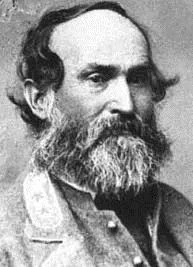Sandusky House and the Battle of Lynchburg
Sandusky House present day
One of Lynchburg’s most historic homes is Sandusky House. The property had several owners until George C. Hutter bought the home and hundreds of surrounding acres in 1841. During Hutter’s ownership is when it would really become part of the history of Lynchburg when the house served as the Union Army headquarters during the Battle of Lynchburg on June 17 and 18, 1864. General David Hunter, in charge of the Union forces had orders from General Grant to capture Lynchburg and take control of the railroad lines in the city, along with the James River canal. On his way to Lynchburg General Hunter had stopped in nearby Lexington and burned Virginia Military Institute, and, early on June 17th, General Hunter and his troops pillaged Poplar Forest before finally arriving in Lynchburg, taking control of Sandusky. The extra time General Hunter took to arrive in Lynchburg gave Confederate General Jubal Early time to get from Charlottesville to Lynchburg to protect the city from the Union forces.
The fighting would start in the afternoon of June 17, 1864. During the fighting General Early’s men worked on the city’s fortifications, with their biggest project being building a fort, named for General Early located on what is now Fort Avenue. The fighting stopped at night and General Hunter and his men ate dinner at Sandusky being confident that they would be able to capture Lynchburg with relative ease. Serving with General Hunter were two future U.S. Presidents, Rutherford B. Hayes and William McKinley. The Confederate forces were badly outnumbered but they were not going to let Lynchburg be taken easily.
On the morning of June 18, 1864 skirmishes broke out on the outskirts of the city. Union signal officers cut a hole in the roof of Sandusky to get on the roof to be able to see how the battle was unfolding. At first the battle seemed to be going in the Union’s favor but as the day progressed the Union forces were retreating back into the city. That night General Hunter and his men gathered inside the house to discuss their next plan. General Hunter thought more Confederate troops were arriving and would outnumber his forces, he was also running low on ammunition, so he decided to retreat. What General Hunter thought were Confederate reinforcements arriving by train was actually a trick. That night General Hunter heard trains continuously running and people cheering and making noise when the supposed reinforcements reached the city. But actually citizens of Lynchburg had assembled at the train station and cheered one train with empty boxcars going back in forth in and out of town.
The raised covered section of roof is where a hole was cut and used as a lookout so Union signal officers could see how the Battle of Lynchburg was unfolding.
On the morning of the 19th General Hunter and his men retreated from Lynchburg heading back into West Virginia, where they were before making the march to Lynchburg. General Hunter’s time in Lynchburg, and Virginia, was part of what would become known as Hunter’s Raid. Before leaving Sandusky Union forces pillaged the home taking with them some of Mrs. Hutter’s valuables. Union forces also left over one hundred wounded Union soldiers in the barn, some soldiers would later die. Lynchburg was able to survive the war relatively unharmed, in large part thanks to the ingenuity of some of its citizens. The rest of Virginia and the South as a whole were not as lucky.
Bibliography:
"Historic Sandusky Foundation | History." Historic Sandusky Foundation | History. Accessed March 16, 2015. http://www.historicsandusky.org/history.htm.
"Historic Sandusky Foundation | Photos." Historic Sandusky Foundation | Photos. Accessed March 16, 2015. http://www.historicsandusky.org/photos.htm.




